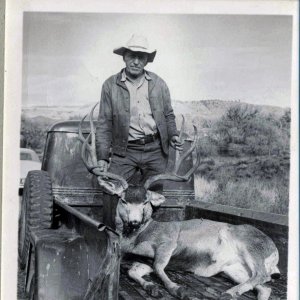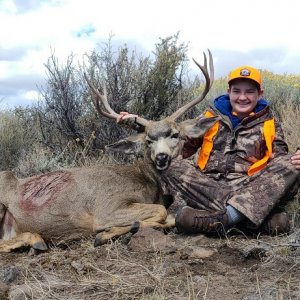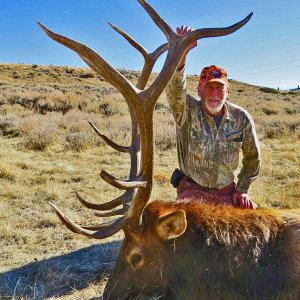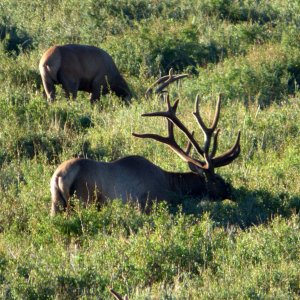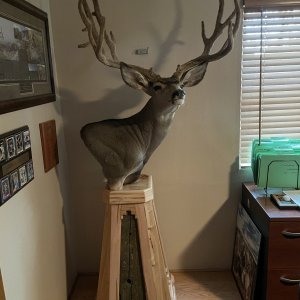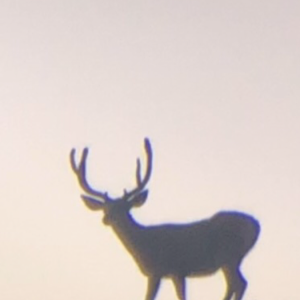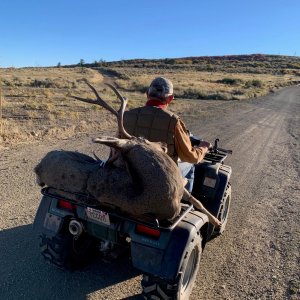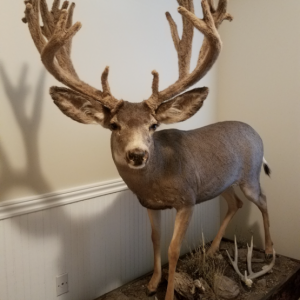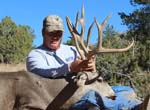You are using an out of date browser. It may not display this or other websites correctly.
You should upgrade or use an alternative browser.
You should upgrade or use an alternative browser.
QUAIL SEASON
- Thread starter Bates7
- Start date
R
redrabbit
Guest
I am hoping for some fantastic mearns hunts later this year. Due to the dry spring, the Gambels may be slim in numbers, but we will find out this weekend.
RR
RR
B
bbgellerman
Guest
Remember when it didnt rain for 130 days straight a couple years ago. That pretty much wiped out the quail anywhere within a couple hours of Phoenix. The only expeption would be next to a lake or river for a water source. Most of the tanks were dry for long enough to pretty much wipe out the quail population. San Carlos, Roosevelt, Bartlett all pretty much were a wash last year. Last year I hit up my "sure bet" spots where in the past we have shot 30-40 birds a day, which usually requires seeing hundreds of birds that are missed, and we didnt see one bird. I will be heading south to Tucson where the forcast is much better, especially for mearns. I think it will take 2 to 3 years of rain for the quail to recover to what they were 3 or 4 seasons ago. They are basically coming back from nothing, although I am sure a few here will disagree. Southern AZ is where I am going to be.
OutdoorWriter
Long Time Member
- Messages
- 8,340
LAST EDITED ON Sep-30-08 AT 02:14PM (MST)[p]As it is with deer, standing water has little to do with population growth and reproduction.
The following is from my IN THE FIELD column in the Oct. issue of Rocky Mt. Game & Fish magazine. -TONY
Last winter?s above-average rains, snow pack, runoff and associated green-up should provide Gambel?s quail hunters with some decent, but somewhat spotty, shooting when the season opens on Oct. 3.
Ron Day, small-game specialist for the Arizona Game and Fish Department, said those areas that had decent quail concentrations last year should see significantly higher bird counts this fall.
?All the winter rains certainly helped reproduction, as is normally the case. But in order to reproduce, there had to be birds to begin with. So hunters who found decent bird numbers last year when reproduction was bad due to no rain, should concentrate on those areas again,? Day said.
?We need at least back-to-back years of good winter and spring precipitation to produce what we call a ?bumper crop? of Gambel?s quail. Last year (2006-7) throughout much of Arizona, we had a record dry winter. But right now there is abundant and thick green feed growing on the ground, so we are definitely expecting at least average quail reproduction this year.?
Day explained that the luxuriant green-up doesn't just mean food for the quail. ?Vitamin A is a key for quail and other animals, especially small game, to have fully developed and functioning sexual organs. It's nature's way of ensuring a lot of young aren't produced when the vegetative resources aren't available to support the newborn animals,? he said.
Biologists knew green vegetation was necessary years ago; they just weren't quite sure why until long-retired AGFD biologist Steve Gallizioli conducted an extensive study on quail a few decades ago. The program lasted many years and consumed hundreds of man-hours.
Gallizioli?s research provided two interesting results. It showed hunting has little or no effect on quail numbers, and the quail population is related more to the success of the hatch than to carry-over from the previous year. The biggest factor was rain. While Mearns? quail depend more on summer rains, the mid-winter rains from late November and into March influence the Gambel?s and Scaled quail hatches the most.
Gallizioli discovered good plant growth in late spring and early summer due to the winter rains was a key factor. He also found if the moisture was dispersed over a longer time to saturate the soil, more quail resulted.
So biologists knew green vegetation was necessary in the Gambel?s reproductive scheme, but research at the University of Arizona eventually unraveled why that is the case. The research showed higher concentrations of Vitamin A in the bird's livers when they were mating and determined it was a key to the quail's sexual development for mating. Plants such as Vitamin A-rich alfilaria and storksbill raise the hens' hormone level, providing the ingredients for large broods.
Once the eggs hatch, the quail chicks also derive benefits from increased vegetation. The young birds need a large amount of protein to survive, and the copious vegetation provides that protein in the form of increased insect populations. When the plants eventually go to seed, both the juvenile and adult birds have a generous and nutritional food supply.
Gallizioli said the best indicator of how good the fall season will be is the preponderance of spring flowers, and last past spring, the desert was awash in a colorful array of wild flowers.
AGFD biologists once conducted annual call counts throughout most of the state. These surveys provided enough information where biologists can now compare the localized rainfall records for the winter and spring to predict ups and downs in quail populations for the following fall. Hunters can use a similar method to determine where the best quail hunting will be. To this end, maps of rainfall distribution patterns help tremendously to find the ultimate best areas.
Day added, ?I think one of the best places to hunt will be the Tonto Basin area. It was pretty decent in 2007, and it got lots of rain this year. So it should be even better in 2008. I suggest hunters do a bit of pre-season scouting, too. Quail coveys usually hang around a small area. So once you find one, it's fairly easy to locate it again in the general vicinity.
Southern Arizona, where precipitation has been way below normal, is a bird of a different feather. Although spring call counts indicated some areas experienced near average reproduction, other areas were well below average.
?Because of the lack of rain down south, most areas had nowhere near the green-up of vegetation that other areas in the state saw,? said Day.
Quail hunting for all species in Arizona ? Gambel?s, Mearns? and scaled -- has always had its ups and downs. The best year in recent times was in 1979 when nearly 100,000 hunters reported harvesting more than 2.5-million quail. Since then, quail numbers and hunter interest have fallen off, with hunter numbers ranging from 44,000 in 1990 to 75,000 in 2005, when hunters bagged 1.5 million birds. In 2006, about 56,000 hunters harvested about 675,000 Gambel?s quail.
Last year?s Mearns? quail hunting in the south-central and south-eastern part of Arizona was the best in a decade. If the monsoon summer rains produced enough moisture, this year?s season, which opens on Nov. 28, should be even better.
?Scaled quail will likely benefit from all this green-up in some smaller areas, but Mearns? reproduction is primarily keyed to summer rainfall. Last season we experienced the best Mearns? quail hunting in probably 30 years. If the good rainfall this summer in southeastern Arizona produced the desired effect, we could have unparalleled Mearns? reproduction,? Day said.
The following is from my IN THE FIELD column in the Oct. issue of Rocky Mt. Game & Fish magazine. -TONY
ARIZONA QUAIL OUTLOOK
Copyright by Tony Mandile
Copyright by Tony Mandile
Last winter?s above-average rains, snow pack, runoff and associated green-up should provide Gambel?s quail hunters with some decent, but somewhat spotty, shooting when the season opens on Oct. 3.
Ron Day, small-game specialist for the Arizona Game and Fish Department, said those areas that had decent quail concentrations last year should see significantly higher bird counts this fall.
?All the winter rains certainly helped reproduction, as is normally the case. But in order to reproduce, there had to be birds to begin with. So hunters who found decent bird numbers last year when reproduction was bad due to no rain, should concentrate on those areas again,? Day said.
?We need at least back-to-back years of good winter and spring precipitation to produce what we call a ?bumper crop? of Gambel?s quail. Last year (2006-7) throughout much of Arizona, we had a record dry winter. But right now there is abundant and thick green feed growing on the ground, so we are definitely expecting at least average quail reproduction this year.?
Day explained that the luxuriant green-up doesn't just mean food for the quail. ?Vitamin A is a key for quail and other animals, especially small game, to have fully developed and functioning sexual organs. It's nature's way of ensuring a lot of young aren't produced when the vegetative resources aren't available to support the newborn animals,? he said.
Biologists knew green vegetation was necessary years ago; they just weren't quite sure why until long-retired AGFD biologist Steve Gallizioli conducted an extensive study on quail a few decades ago. The program lasted many years and consumed hundreds of man-hours.
Gallizioli?s research provided two interesting results. It showed hunting has little or no effect on quail numbers, and the quail population is related more to the success of the hatch than to carry-over from the previous year. The biggest factor was rain. While Mearns? quail depend more on summer rains, the mid-winter rains from late November and into March influence the Gambel?s and Scaled quail hatches the most.
Gallizioli discovered good plant growth in late spring and early summer due to the winter rains was a key factor. He also found if the moisture was dispersed over a longer time to saturate the soil, more quail resulted.
So biologists knew green vegetation was necessary in the Gambel?s reproductive scheme, but research at the University of Arizona eventually unraveled why that is the case. The research showed higher concentrations of Vitamin A in the bird's livers when they were mating and determined it was a key to the quail's sexual development for mating. Plants such as Vitamin A-rich alfilaria and storksbill raise the hens' hormone level, providing the ingredients for large broods.
Once the eggs hatch, the quail chicks also derive benefits from increased vegetation. The young birds need a large amount of protein to survive, and the copious vegetation provides that protein in the form of increased insect populations. When the plants eventually go to seed, both the juvenile and adult birds have a generous and nutritional food supply.
Gallizioli said the best indicator of how good the fall season will be is the preponderance of spring flowers, and last past spring, the desert was awash in a colorful array of wild flowers.
AGFD biologists once conducted annual call counts throughout most of the state. These surveys provided enough information where biologists can now compare the localized rainfall records for the winter and spring to predict ups and downs in quail populations for the following fall. Hunters can use a similar method to determine where the best quail hunting will be. To this end, maps of rainfall distribution patterns help tremendously to find the ultimate best areas.
Day added, ?I think one of the best places to hunt will be the Tonto Basin area. It was pretty decent in 2007, and it got lots of rain this year. So it should be even better in 2008. I suggest hunters do a bit of pre-season scouting, too. Quail coveys usually hang around a small area. So once you find one, it's fairly easy to locate it again in the general vicinity.
Southern Arizona, where precipitation has been way below normal, is a bird of a different feather. Although spring call counts indicated some areas experienced near average reproduction, other areas were well below average.
?Because of the lack of rain down south, most areas had nowhere near the green-up of vegetation that other areas in the state saw,? said Day.
Quail hunting for all species in Arizona ? Gambel?s, Mearns? and scaled -- has always had its ups and downs. The best year in recent times was in 1979 when nearly 100,000 hunters reported harvesting more than 2.5-million quail. Since then, quail numbers and hunter interest have fallen off, with hunter numbers ranging from 44,000 in 1990 to 75,000 in 2005, when hunters bagged 1.5 million birds. In 2006, about 56,000 hunters harvested about 675,000 Gambel?s quail.
Last year?s Mearns? quail hunting in the south-central and south-eastern part of Arizona was the best in a decade. If the monsoon summer rains produced enough moisture, this year?s season, which opens on Nov. 28, should be even better.
?Scaled quail will likely benefit from all this green-up in some smaller areas, but Mearns? reproduction is primarily keyed to summer rainfall. Last season we experienced the best Mearns? quail hunting in probably 30 years. If the good rainfall this summer in southeastern Arizona produced the desired effect, we could have unparalleled Mearns? reproduction,? Day said.
B
bbgellerman
Guest
Outdoorwriter,
Did you hunt Tonto Basin last year? I would like to place a "gentlemens bet" on that prediction. What do you say? I dont dispute your info about reproduction, I just know what I see in the field.
Did you hunt Tonto Basin last year? I would like to place a "gentlemens bet" on that prediction. What do you say? I dont dispute your info about reproduction, I just know what I see in the field.
OutdoorWriter
Long Time Member
- Messages
- 8,340
>>Day added, ?I think one of the best places to hunt will be the Tonto Basin area. It was pretty decent in 2007, and it got lots of rain this year. So it should be even better in 2008. I suggest hunters do a bit of pre-season scouting, too. Quail coveys usually hang around a small area. So once you find one, it's fairly easy to locate it again in the general vicinity.<<
Probably best to call Ron Day at AZ G&F and offer him the bet since he's the one who made the prediction based on the department's wing surveys and call counts.
Let me know if you need his direct line. -TONY
Probably best to call Ron Day at AZ G&F and offer him the bet since he's the one who made the prediction based on the department's wing surveys and call counts.
Let me know if you need his direct line. -TONY
B
bbgellerman
Guest
Come on Outdoorwriter, its your article and source. I honestly hope you are right. I have a spot in Rye, and a spot at Rosevelt that used to hold hundreds of birds.....just not last year. If I have any luck on the weekend of the 11th (thats the first time I can go because of elk and turkey tags), I will post my pictures. If you could pm me Ron Day's phone # I will call him. Hopefully some other quail hunters will provide thier input. I am just as interested in finding the best areas to start as anyone else.
S
Snapshot
Guest
I have never hunted Tonto basin so I have no input on that. I will be going out to Willow springs in 37B or south of my house in 34A this weekend, and I will see how things are in those areas. I live in a Sahuarita rural area and there are quite a few Gambels running around.
OutdoorWriter
Long Time Member
- Messages
- 8,340
>>Come on Outdoorwriter, its your article and source. I honestly hope you are right.<<
I assume you meant to say "I honestly hope Day is right." Again, all I did was REPORT what he said; I made NO comment in regards to it.
Let me try to provide an analogy.
If I wrote an article on abortion and quoted the Pope as saying, "The Catholic Church does not condone abortion," I would be reporting what he said, not my opinion. In contrast, if I wrote an opinion column where I provided MY personal view on abortion, it would not be reporting; it would an opinion, i.e. an editorial if you will that reflects the views of the writer.
And if you want to see what it would look like, here's a link to a Letter to the Editor of mine that was published in today's AZ Republic. -TONY
http://www.azcentral.com/arizonarepublic/opinions/articles/2008/10/01/20081001wedlets011.html
I assume you meant to say "I honestly hope Day is right." Again, all I did was REPORT what he said; I made NO comment in regards to it.
Let me try to provide an analogy.
If I wrote an article on abortion and quoted the Pope as saying, "The Catholic Church does not condone abortion," I would be reporting what he said, not my opinion. In contrast, if I wrote an opinion column where I provided MY personal view on abortion, it would not be reporting; it would an opinion, i.e. an editorial if you will that reflects the views of the writer.
And if you want to see what it would look like, here's a link to a Letter to the Editor of mine that was published in today's AZ Republic. -TONY
http://www.azcentral.com/arizonarepublic/opinions/articles/2008/10/01/20081001wedlets011.html
B
bbgellerman
Guest
Bates,
You will do well down there. I spend a couple long weekends last year around Sonoita/ Patagonia. Sonoita is a pretty awesome town. You have great quail hunting within a hour for Mearns, Scaled, and Gambels. There is a steakhouse there that is top notch, and wine tasting across the street (if you are into that). You can get a motel right there or go to Patagonia which is also a cool old town, with great hunting very close by. All in all it can make for a great quail hunt. There were a lot of mearns/scaled/gambels down in that area last year and this year should just be that much better.
You will do well down there. I spend a couple long weekends last year around Sonoita/ Patagonia. Sonoita is a pretty awesome town. You have great quail hunting within a hour for Mearns, Scaled, and Gambels. There is a steakhouse there that is top notch, and wine tasting across the street (if you are into that). You can get a motel right there or go to Patagonia which is also a cool old town, with great hunting very close by. All in all it can make for a great quail hunt. There were a lot of mearns/scaled/gambels down in that area last year and this year should just be that much better.
OutdoorWriter
Long Time Member
- Messages
- 8,340
Brandon,
Is the Stage Stop Motel in Patagonia still open?? -TONY
Is the Stage Stop Motel in Patagonia still open?? -TONY
B
bbgellerman
Guest
I think thats where I stayed once. Its a two story old place with a bar. Cheap rooms, cheap drinks, and great Mearns country right down the road.
Another note about that area is that you dont see the illegal alien activity when your out hunting. If you hunt down around Parker Canyon Lake and further South you can expect to see North/South garbage trails everywhere. I like the idea of hunting a spot without illegals breaking into my truck when I am out and about.
Another note about that area is that you dont see the illegal alien activity when your out hunting. If you hunt down around Parker Canyon Lake and further South you can expect to see North/South garbage trails everywhere. I like the idea of hunting a spot without illegals breaking into my truck when I am out and about.
OutdoorWriter
Long Time Member
- Messages
- 8,340
LAST EDITED ON Oct-02-08 AT 04:13PM (MST)[p]Yup, that's the place. The food isn't too bad either, if I recall. It's been years since I have been there, though.
Here's an article I did on Mearns' hunting in that area way back in the late 1980s. -TONY
The heavy coating of frost had caused the foot-high grass to lay over, forming little pockets beneath it. As I pussyfooted through the stand of trees, I tried to avoid the partially frozen arches. My effort was futile. Each time my boot touched down, the crisp clumps of grass crunched noisily. I stopped next to a spreading oak, where only the sound of rustling leaves in the gentle breeze disrupted the quiet.
I was on my first Coues deer hunt in southeastern Arizona. My optimism had convinced me a trophy buck would walk out from the trees on the canyon's opposite side. Intently, I scanned the sunlit openings on the far slope.
Suddenly, a loud ?brrrrrrr? came from a few feet behind me. I froze in place and listened to my heartbeat beat an up-tempo rhythm reminiscent of a Jerry Lee Lewis tune.
Since coming to state from New Jersey a year earlier, I had heard lots of strange things. One person told me everything in the Arizona outdoors bites, stings or sticks. Someone else advised me to watch where I walked to avoid stepping on snakes and other crawly things. With these helpful warnings in mind, I immediately connected the sound to a 10-foot-long, man-eating rattlesnake.
I didn't laugh when the incident occurred nearly 25 years ago. Now, however, I always smile when I remember my embarrassment after I realized what had scared the bejabbers out of me. A few tiny birds had flushed from their hiding place beneath the grass near my feet, providing a sudden and somewhat startling introduction to the tight-holding tactics of the Mearns' quail.
I had no idea what the feathered buzzbombs were at the time. They took off in a whirlwind of motion with wings beating faster than a window shutter in a hurricane. Counting them was out of the question; within seconds, they had disappeared again.
Five years later, I actually hunted the Mearns' in the Santa Rita Mountains near Tucson for the first time. I had filled my deer tag with a young whitetail buck. While my two companions continued to hunt their venison, I uncased my shotgun and went searching for quail
I had successfully hunted Gambel's quail a few times and thought chasing Mearns would be similar. Boy, was I wrong.
The Gambel's inhabit predominantly desert landscapes, with lots of sand, rocks and cactus. By contrast, Mearns' habitat, at elevations between 4,000 to 8,000 feet, consists of grassy, open woodlands --- mostly rolling hills covered with a mixture of evergreen oaks and junipers.
Unfortunately, no one told me finding these birds without a dog in this type of country would be equivalent to locating a penny on the turf of a football stadium with my eyes closed. A day's walking produced nothing more than sore feet and a few deer sightings.
Two weeks later, I called a friend who avidly hunts Mearns. He also owns a two Brittany spaniels. When I asked if he was planning a hunt before the season ended, he graciously invited me to go on the following Saturday. I had hoped he would, of course.
That weekend I learned why the Mearns' is the classiest of all quail. No other western game bird outshines the sporting qualities of these fast-flying missiles. Unlike the West's other species that run like race horses, the diminutive Mearns' quail hold for a dog and prefer to sit tight until kicked out. Yet despite these holding traits, they are less-than-easy targets.
Mearns' have various tricks to outwit the unsuspecting hunter -- ahem -- up their wings. One of their favorite maneuvers is the turn-and-dive routine. The birds flush wildly, accelerate to about 40 mph. over 20 yards, then sharply turn left or right and dive for the ground. This would be fine in the open, but the turn usually puts them behind the nearest tree just as the gun goes off. Although the bird flies off unscathed, the hunter finds out how well his shotgun patterns by measuring the hole through the leaves.
Another of their unfair techniques is what I call their kamikaze mode. Most quail flush in the direction they are facing while sitting on the ground. Sometimes that direction points straight at the guy with the gun. It's not bad if the hunter is back away from the flush. It rarely happens that way, though. Instead, the rise occurs within a few feet. Rather than downing birds, the hunter is often busy ducking.
Several years ago, outdoor writer Tom Huggler called me for some help. He was on three-month-long, cross-country trip to gather material for his book, QUAIL HUNTING IN AMERICA. Huggler had hunted the other species in past years and during his current trip. He was coming to Arizona to hunt Mearns', so we set up a mid-December meeting.
The week before Tom was due, I contacted Floyd Preas. He had hunted almost every weekend since the season began. I hoped he would pinpoint some of the better areas. He did much better. When I told him when Huggler would arrive, Preas checked his calendar. The dates were open, so he decided to come with us.
We met Huggler and his two English setters, which only a former English teacher would name Chaucer and McBeth, at an interchange on Interstate 10, south of Tucson. From there, we drove south to the Stage Stop Motel in Patagonia.
Bird hunting monopolized the dinner conversation that night. Huggler had obviously done his homework on the bird's history and habits. He even knew about the confusion surrounding the bird's true name.
The Mearns' has acquired an assortment of names over the years. A few of the common ones include the Montezuma, Harlequin, crazy, massena and fool quail. Its official Latin name is Crytonyx montezuma mearnsi, the last part derived from Edgar A. Mearns, a U.S. Army doctor and naturalist who roamed the southwest a century ago. A few field guides list it as one of three subspecies of the Harlequin quail, a long-time inhabitant of the northern states of Mexico.
The colorful bird has a small range in the United States. The largest population inhabits southeastern Arizona, a fair number exist in southern New Mexico and a few birds supposedly live in Texas, where they are protected. Although New Mexico and the Mexican states of Chihuahua and Tlaxcala allow hunting, the southeastern hills of Arizona, near Tucson, Patagonia, Sonoita and Ruby, draw the most hunters.
Mearns' hunting is a relatively recent happening. Because the birds' overall range was so tiny, and biologists knew little about their reproductive capability, the Mearns' quail had been protected during the first half of this century. In 1951, Steve Gallizioli, a now-retired chief of the Arizona Game and Fish Department's wildlife division began an intensive quail study.
Gallizioli's findings showed quail populations fluctuated with the weather; more rainfall meant more quail. Moreover, his research showed hunting had little or no effect on bird numbers. The weather conclusion apparently was correct; the above-average rainfall for much of the last decade has provided excellent quail counts and long seasons. Over the past two years, however, quail numbers, especially Gambel's, have dropped because of below-average moisture.
When Preas suggested we meet for breakfast at 7:00 a.m., Huggler's face took on a surprised expression. "How come so late?" he asked.
Preas laughed. "These birds don't get up early on cold December mornings. They like to sit on their roosts 'til the sun comes up and warms things. I think the best hunting really is in the afternoon."
The explanation apparently made sense to Huggler. As he turned to leave the restaurant, he turned and smiled. "Sounds like these are my kind of birds."
The sun had moved well above the Huachuca Mountains when Huggler opened the tailgate of my Nissan pickup. Chaucer and MacBeth, no doubt anxious after the 20-mile drive from the motel to the field, hit the ground running and immediately started searching for scent.
Huggler loaded his 20-ga. Browning, then encouraged the dogs with "Hunt 'em up!"
The setters dashed up a hill that appeared too steep for mere mortals. A few seconds later, seemingly unconcerned about our welfare, the dogs disappeared over the crest. After exchanging mournful glances, we spread out and started the climb. We finally caught up with the dogs 20 minutes later.
Huggler signaled us to a halt and cautioned, "Be ready. Chaucer looks birdie."
Eager to pinpoint the scent, the black and white setter quartered the oak-studded hillside. Frantically, he started circling, sniffing each suspect clump of bunchgrass. He briefly locked into a not-so-sure point, then moved on.
When Huggler reached the spot, the air filled with birds. He had stepped right in the middle of the covey. The quail's sudden departure and the heart-stopping ?brrrrrrr? of their wings seemed to turn the startled hunter into a statue. Five seconds later, he raised his over-and-under, pointed the barrels at two different birds but never pulled the trigger.
The brief hesitation had provided the quail the time they needed. In characteristic fashion they set their buzzing wings and turned sharply behind the nearest tree.
Flustered, Huggler looked at me, laughed and shook his head. He knew the birds had outsmarted him on this occasion.
I quickly remembered my first meeting with the Mearns' and what the unexpected ?brrrrrrr? had done to me. I couldn't keep from chuckling aloud.
The sun was directly overhead when we arrived back at the truck. Between us, we had bagged six birds. We had missed many more, though. After one double miss, Huggler even blamed me for substituting blanks in his shell vest. Tired and probably frustrated by our less-than-perfect marksmanship, the dogs had stretched out on the ground to lap at their water dish.
Huggler bent over, patted each one on the head and removed a male bird from his game pouch. He examined it closely. "I see why folks call these harlequin quail."
Among game birds only the male chukar and ringneck pheasant come close to the striking appearance of the male Mearns'. The distinctive white and black markings on its dark face and throat give the bird a circus-clown look. Elliptical, buff-colored spots cover its brown rump and back, while white and black dots pepper the grayish-brown wings. The breast is a deep reddish brown, and pure white spots fleck the bird's dark gray flanks. The hen's mottled brown plumage looks similar to the females of other bird species and is rather dull.
Mearns' hunters have used nearly every breed of dog. Hoyd Patty, who has lived in Patagonia for 30 years, is a devout Mearns' hunter and favors the Brittany spaniel. Another friend would throw down the gauntlet if someone suggested his yellow Lab was unsuited to quail hunting.
After getting hooked on Mearns a few years ago, I bought a German shorthair pup and relegated Ginger's training to Bruce Ludwig in Chino Valley. She is excellent on Mearns' and also does a fine job on Gambel's and pheasant. If I were to recommend a specific breed, my prejudice would show. Ludwig, on the other hand, prefers English pointers or red setters.
Mearns' quail like to "scratch." Because they feed mostly on tubers and bulbs, their search for food produces cone-shaped depressions, normally under or near trees and bushes. When these telltale signs are fresh, a dog has little problem following the birds' scent.
The ground markings aid those hardy enough to hunt without dogs, too. Rather than hunting haphazardly like I did on my first hunt, they look for fresh diggings and make ever-widening circles until they bust a covey. Then, they hunt up the singles. Granted, it's more difficult than using a good dog, but a friend of mine frequently takes a limit in this manner.
Mearns' quail are small. Two loaded shotshells weigh about the same as the bird. Moreover, typical shooting distances rarely exceed 30 yards. The birds are easy to stop --- if you hit one. Even though a heavy load might penetrate an oak tree's foliage better, most gunners get good results with No. 8 or No. 9 shot out of a modified or improved choke barrel.
The most important consideration for a gun is weight. Searching for Mearns' is much different from sitting in a field and waiting for a dove to fly past. Although the quail's habitat looks as if walking it will be easy, it is deceptively tough and amounts to real work. A cumbersome scattergun seems to get heavier with each step.
I once lugged a heavy Fox double on an all-day hunt near Pena Blanca Lake. At day's end, the 12 gauge side-by-side seemed twice as heavy as it did in the morning. I now carry the lightest shotgun I own --- a 20-ga. Browning Citori with 26-inch barrels.
A camaraderie has grown between those who enjoy hunting the Mearns'. On most weekends during the season, you will find a dozen or so members of the loose-knit fraternity having a cup of coffee or something a bit stronger in the Stage Stop restaurant, the unofficial gathering place. Most are friendly and willing to help newcomers. They will tell you about the habits of the Mearns', answer questions about dogs or what load to use. That's where the helps ends, though. Whatever you do, refrain from asking where the birds are congregating; once a Mearns' hunter finds a hotspot, it becomes a closely guarded secret.
Here's an article I did on Mearns' hunting in that area way back in the late 1980s. -TONY
THE MAGICAL MEARNS
Copyright by Tony Mandile
Copyright by Tony Mandile
The heavy coating of frost had caused the foot-high grass to lay over, forming little pockets beneath it. As I pussyfooted through the stand of trees, I tried to avoid the partially frozen arches. My effort was futile. Each time my boot touched down, the crisp clumps of grass crunched noisily. I stopped next to a spreading oak, where only the sound of rustling leaves in the gentle breeze disrupted the quiet.
I was on my first Coues deer hunt in southeastern Arizona. My optimism had convinced me a trophy buck would walk out from the trees on the canyon's opposite side. Intently, I scanned the sunlit openings on the far slope.
Suddenly, a loud ?brrrrrrr? came from a few feet behind me. I froze in place and listened to my heartbeat beat an up-tempo rhythm reminiscent of a Jerry Lee Lewis tune.
Since coming to state from New Jersey a year earlier, I had heard lots of strange things. One person told me everything in the Arizona outdoors bites, stings or sticks. Someone else advised me to watch where I walked to avoid stepping on snakes and other crawly things. With these helpful warnings in mind, I immediately connected the sound to a 10-foot-long, man-eating rattlesnake.
I didn't laugh when the incident occurred nearly 25 years ago. Now, however, I always smile when I remember my embarrassment after I realized what had scared the bejabbers out of me. A few tiny birds had flushed from their hiding place beneath the grass near my feet, providing a sudden and somewhat startling introduction to the tight-holding tactics of the Mearns' quail.
I had no idea what the feathered buzzbombs were at the time. They took off in a whirlwind of motion with wings beating faster than a window shutter in a hurricane. Counting them was out of the question; within seconds, they had disappeared again.
Five years later, I actually hunted the Mearns' in the Santa Rita Mountains near Tucson for the first time. I had filled my deer tag with a young whitetail buck. While my two companions continued to hunt their venison, I uncased my shotgun and went searching for quail
I had successfully hunted Gambel's quail a few times and thought chasing Mearns would be similar. Boy, was I wrong.
The Gambel's inhabit predominantly desert landscapes, with lots of sand, rocks and cactus. By contrast, Mearns' habitat, at elevations between 4,000 to 8,000 feet, consists of grassy, open woodlands --- mostly rolling hills covered with a mixture of evergreen oaks and junipers.
Unfortunately, no one told me finding these birds without a dog in this type of country would be equivalent to locating a penny on the turf of a football stadium with my eyes closed. A day's walking produced nothing more than sore feet and a few deer sightings.
Two weeks later, I called a friend who avidly hunts Mearns. He also owns a two Brittany spaniels. When I asked if he was planning a hunt before the season ended, he graciously invited me to go on the following Saturday. I had hoped he would, of course.
That weekend I learned why the Mearns' is the classiest of all quail. No other western game bird outshines the sporting qualities of these fast-flying missiles. Unlike the West's other species that run like race horses, the diminutive Mearns' quail hold for a dog and prefer to sit tight until kicked out. Yet despite these holding traits, they are less-than-easy targets.
Mearns' have various tricks to outwit the unsuspecting hunter -- ahem -- up their wings. One of their favorite maneuvers is the turn-and-dive routine. The birds flush wildly, accelerate to about 40 mph. over 20 yards, then sharply turn left or right and dive for the ground. This would be fine in the open, but the turn usually puts them behind the nearest tree just as the gun goes off. Although the bird flies off unscathed, the hunter finds out how well his shotgun patterns by measuring the hole through the leaves.
Another of their unfair techniques is what I call their kamikaze mode. Most quail flush in the direction they are facing while sitting on the ground. Sometimes that direction points straight at the guy with the gun. It's not bad if the hunter is back away from the flush. It rarely happens that way, though. Instead, the rise occurs within a few feet. Rather than downing birds, the hunter is often busy ducking.
Several years ago, outdoor writer Tom Huggler called me for some help. He was on three-month-long, cross-country trip to gather material for his book, QUAIL HUNTING IN AMERICA. Huggler had hunted the other species in past years and during his current trip. He was coming to Arizona to hunt Mearns', so we set up a mid-December meeting.
The week before Tom was due, I contacted Floyd Preas. He had hunted almost every weekend since the season began. I hoped he would pinpoint some of the better areas. He did much better. When I told him when Huggler would arrive, Preas checked his calendar. The dates were open, so he decided to come with us.
We met Huggler and his two English setters, which only a former English teacher would name Chaucer and McBeth, at an interchange on Interstate 10, south of Tucson. From there, we drove south to the Stage Stop Motel in Patagonia.
Bird hunting monopolized the dinner conversation that night. Huggler had obviously done his homework on the bird's history and habits. He even knew about the confusion surrounding the bird's true name.
The Mearns' has acquired an assortment of names over the years. A few of the common ones include the Montezuma, Harlequin, crazy, massena and fool quail. Its official Latin name is Crytonyx montezuma mearnsi, the last part derived from Edgar A. Mearns, a U.S. Army doctor and naturalist who roamed the southwest a century ago. A few field guides list it as one of three subspecies of the Harlequin quail, a long-time inhabitant of the northern states of Mexico.
The colorful bird has a small range in the United States. The largest population inhabits southeastern Arizona, a fair number exist in southern New Mexico and a few birds supposedly live in Texas, where they are protected. Although New Mexico and the Mexican states of Chihuahua and Tlaxcala allow hunting, the southeastern hills of Arizona, near Tucson, Patagonia, Sonoita and Ruby, draw the most hunters.
Mearns' hunting is a relatively recent happening. Because the birds' overall range was so tiny, and biologists knew little about their reproductive capability, the Mearns' quail had been protected during the first half of this century. In 1951, Steve Gallizioli, a now-retired chief of the Arizona Game and Fish Department's wildlife division began an intensive quail study.
Gallizioli's findings showed quail populations fluctuated with the weather; more rainfall meant more quail. Moreover, his research showed hunting had little or no effect on bird numbers. The weather conclusion apparently was correct; the above-average rainfall for much of the last decade has provided excellent quail counts and long seasons. Over the past two years, however, quail numbers, especially Gambel's, have dropped because of below-average moisture.
When Preas suggested we meet for breakfast at 7:00 a.m., Huggler's face took on a surprised expression. "How come so late?" he asked.
Preas laughed. "These birds don't get up early on cold December mornings. They like to sit on their roosts 'til the sun comes up and warms things. I think the best hunting really is in the afternoon."
The explanation apparently made sense to Huggler. As he turned to leave the restaurant, he turned and smiled. "Sounds like these are my kind of birds."
The sun had moved well above the Huachuca Mountains when Huggler opened the tailgate of my Nissan pickup. Chaucer and MacBeth, no doubt anxious after the 20-mile drive from the motel to the field, hit the ground running and immediately started searching for scent.
Huggler loaded his 20-ga. Browning, then encouraged the dogs with "Hunt 'em up!"
The setters dashed up a hill that appeared too steep for mere mortals. A few seconds later, seemingly unconcerned about our welfare, the dogs disappeared over the crest. After exchanging mournful glances, we spread out and started the climb. We finally caught up with the dogs 20 minutes later.
Huggler signaled us to a halt and cautioned, "Be ready. Chaucer looks birdie."
Eager to pinpoint the scent, the black and white setter quartered the oak-studded hillside. Frantically, he started circling, sniffing each suspect clump of bunchgrass. He briefly locked into a not-so-sure point, then moved on.
When Huggler reached the spot, the air filled with birds. He had stepped right in the middle of the covey. The quail's sudden departure and the heart-stopping ?brrrrrrr? of their wings seemed to turn the startled hunter into a statue. Five seconds later, he raised his over-and-under, pointed the barrels at two different birds but never pulled the trigger.
The brief hesitation had provided the quail the time they needed. In characteristic fashion they set their buzzing wings and turned sharply behind the nearest tree.
Flustered, Huggler looked at me, laughed and shook his head. He knew the birds had outsmarted him on this occasion.
I quickly remembered my first meeting with the Mearns' and what the unexpected ?brrrrrrr? had done to me. I couldn't keep from chuckling aloud.
The sun was directly overhead when we arrived back at the truck. Between us, we had bagged six birds. We had missed many more, though. After one double miss, Huggler even blamed me for substituting blanks in his shell vest. Tired and probably frustrated by our less-than-perfect marksmanship, the dogs had stretched out on the ground to lap at their water dish.
Huggler bent over, patted each one on the head and removed a male bird from his game pouch. He examined it closely. "I see why folks call these harlequin quail."
Among game birds only the male chukar and ringneck pheasant come close to the striking appearance of the male Mearns'. The distinctive white and black markings on its dark face and throat give the bird a circus-clown look. Elliptical, buff-colored spots cover its brown rump and back, while white and black dots pepper the grayish-brown wings. The breast is a deep reddish brown, and pure white spots fleck the bird's dark gray flanks. The hen's mottled brown plumage looks similar to the females of other bird species and is rather dull.
Mearns' hunters have used nearly every breed of dog. Hoyd Patty, who has lived in Patagonia for 30 years, is a devout Mearns' hunter and favors the Brittany spaniel. Another friend would throw down the gauntlet if someone suggested his yellow Lab was unsuited to quail hunting.
After getting hooked on Mearns a few years ago, I bought a German shorthair pup and relegated Ginger's training to Bruce Ludwig in Chino Valley. She is excellent on Mearns' and also does a fine job on Gambel's and pheasant. If I were to recommend a specific breed, my prejudice would show. Ludwig, on the other hand, prefers English pointers or red setters.
Mearns' quail like to "scratch." Because they feed mostly on tubers and bulbs, their search for food produces cone-shaped depressions, normally under or near trees and bushes. When these telltale signs are fresh, a dog has little problem following the birds' scent.
The ground markings aid those hardy enough to hunt without dogs, too. Rather than hunting haphazardly like I did on my first hunt, they look for fresh diggings and make ever-widening circles until they bust a covey. Then, they hunt up the singles. Granted, it's more difficult than using a good dog, but a friend of mine frequently takes a limit in this manner.
Mearns' quail are small. Two loaded shotshells weigh about the same as the bird. Moreover, typical shooting distances rarely exceed 30 yards. The birds are easy to stop --- if you hit one. Even though a heavy load might penetrate an oak tree's foliage better, most gunners get good results with No. 8 or No. 9 shot out of a modified or improved choke barrel.
The most important consideration for a gun is weight. Searching for Mearns' is much different from sitting in a field and waiting for a dove to fly past. Although the quail's habitat looks as if walking it will be easy, it is deceptively tough and amounts to real work. A cumbersome scattergun seems to get heavier with each step.
I once lugged a heavy Fox double on an all-day hunt near Pena Blanca Lake. At day's end, the 12 gauge side-by-side seemed twice as heavy as it did in the morning. I now carry the lightest shotgun I own --- a 20-ga. Browning Citori with 26-inch barrels.
A camaraderie has grown between those who enjoy hunting the Mearns'. On most weekends during the season, you will find a dozen or so members of the loose-knit fraternity having a cup of coffee or something a bit stronger in the Stage Stop restaurant, the unofficial gathering place. Most are friendly and willing to help newcomers. They will tell you about the habits of the Mearns', answer questions about dogs or what load to use. That's where the helps ends, though. Whatever you do, refrain from asking where the birds are congregating; once a Mearns' hunter finds a hotspot, it becomes a closely guarded secret.
B
bbgellerman
Guest
Tony,
That is a great article on Mearns. It also fires me up for this December! I saved some wings from last year to get my dogs searching for the scent sooner. If you recall they literally smell like nutrient rich soil. The average bird dog does not even register the scent from what I have seen. I ended up kicking up a couple by dumb luck and then let my dog get some good whiffs. Once he knew the scent, it seemed like we were in birds everywhere we went. The first couple times I went Mearns hunting we didnt get squat. The birds are there, its just my dog and I were walking right over them. THEY HOLD TIGHT, TIGHT, TIGHT. Oak trees, elevation, tall grass, and most of all "scratch holes". All those locals said "if you dont see the holes...move". They were right.
That is a great article on Mearns. It also fires me up for this December! I saved some wings from last year to get my dogs searching for the scent sooner. If you recall they literally smell like nutrient rich soil. The average bird dog does not even register the scent from what I have seen. I ended up kicking up a couple by dumb luck and then let my dog get some good whiffs. Once he knew the scent, it seemed like we were in birds everywhere we went. The first couple times I went Mearns hunting we didnt get squat. The birds are there, its just my dog and I were walking right over them. THEY HOLD TIGHT, TIGHT, TIGHT. Oak trees, elevation, tall grass, and most of all "scratch holes". All those locals said "if you dont see the holes...move". They were right.
OutdoorWriter
Long Time Member
- Messages
- 8,340
Brandon,
A couple years after I wrote that article, I bought my German shorthair. She loved hunting Mearns' because they stayed in one place for her, unlike Gambel's. So we had a blast hunting them for about 10 years, mostly along the Ruby Rd. near Sycamore Canyon. -TONY
A couple years after I wrote that article, I bought my German shorthair. She loved hunting Mearns' because they stayed in one place for her, unlike Gambel's. So we had a blast hunting them for about 10 years, mostly along the Ruby Rd. near Sycamore Canyon. -TONY
B
bbgellerman
Guest
Tony,
I have a four year old shorthair and a one year old that will be going with me this year. My four year old is a great bird dog. I think its hard to tell how good your dog is when you are hunting wild Gambels. They run on them so much that you cant tell if you dog is cheating you or if he is doing his job. When I got him on Mearns he never moved an inch on point becasue they would hold so good. Its going to be pretty cool to see how he does this year.
I have a four year old shorthair and a one year old that will be going with me this year. My four year old is a great bird dog. I think its hard to tell how good your dog is when you are hunting wild Gambels. They run on them so much that you cant tell if you dog is cheating you or if he is doing his job. When I got him on Mearns he never moved an inch on point becasue they would hold so good. Its going to be pretty cool to see how he does this year.
A
averagejoehunter
Guest
great article!
man am i ready to go!have been hunting antelope and elk non stop and just got back from new mexico yesterday.need to get the shorthairs out. i have 5- 16 week olds i need to find homes for or i will be buying 5 new travel kennels.did real well on mearns last year they sit as tight as my pen raised bobs..lol only about 5 times more explosive on the flush (unless i turn up the spring tension on the launchers)looking forward to it my dogs are giving me the "look"
average joe
man am i ready to go!have been hunting antelope and elk non stop and just got back from new mexico yesterday.need to get the shorthairs out. i have 5- 16 week olds i need to find homes for or i will be buying 5 new travel kennels.did real well on mearns last year they sit as tight as my pen raised bobs..lol only about 5 times more explosive on the flush (unless i turn up the spring tension on the launchers)looking forward to it my dogs are giving me the "look"
average joe
Similar threads
- Replies
- 0
- Views
- 462
Arizona Hunting Guides & Outfitters
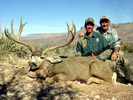 SilverGrand Outfitters
SilverGrand Outfitters
Offering mule deer, elk, antelope, bighorn sheep, javelina, and turkey hunts in Nevada and Arizona.
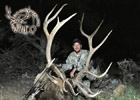 Arizona Elk Outfitters
Arizona Elk Outfitters
Offering the serious hunter a chance to hunt trophy animals in the great Southwest.
 A3 Trophy Hunts
A3 Trophy Hunts
An Arizona Outfitter specializing in the harvest of World Class big game of all species.
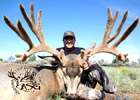 Arizona Strip Guides
Arizona Strip Guides
Highly experienced and highly dedicated team of hardworking professional Arizona Strip mule deer guides.
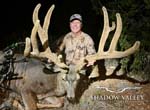 Shadow Valley Outfitters
Shadow Valley Outfitters
AZ Strip and Kaibab mule deer, big bulls during the rut, spot-n-stalk pronghorn and coues deer hunts.

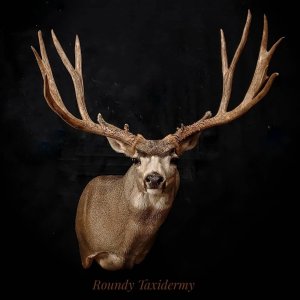
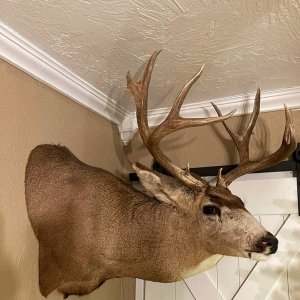
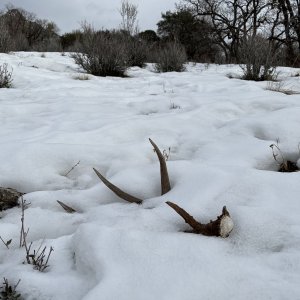
![firstbuck[1].jpg](/xf/data/xfmg/thumbnail/41/41654-7d068624b5e4d727596936558895ae57.jpg?1703961404)
